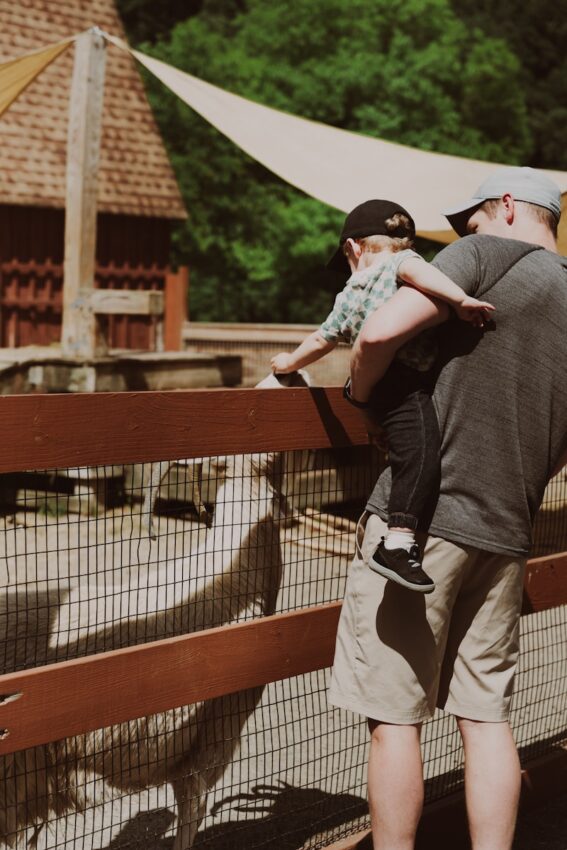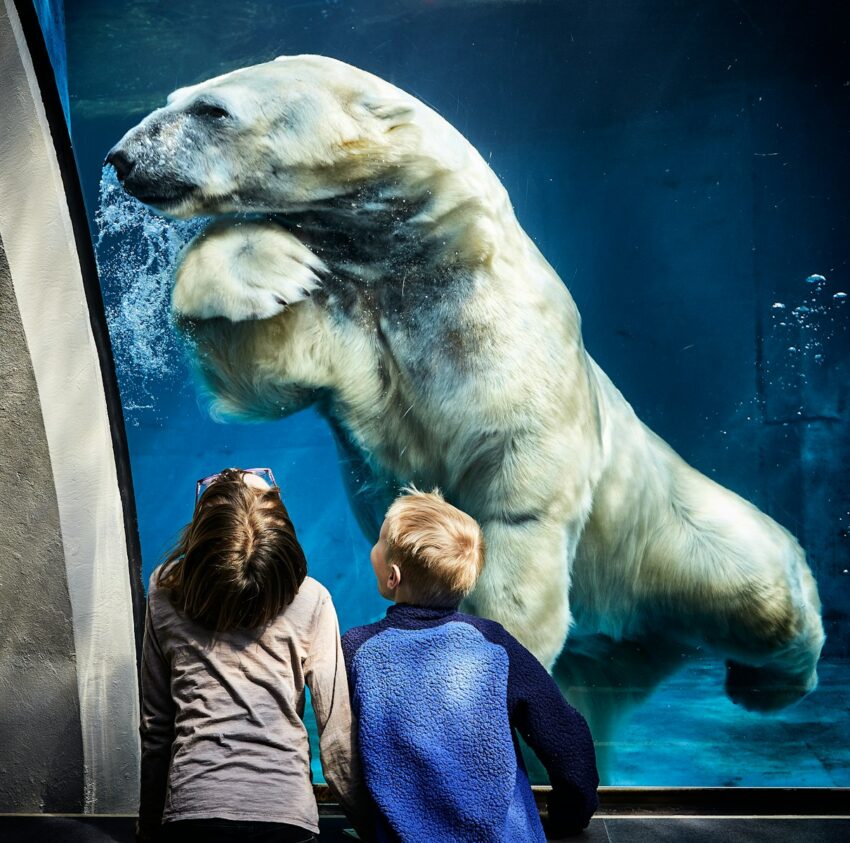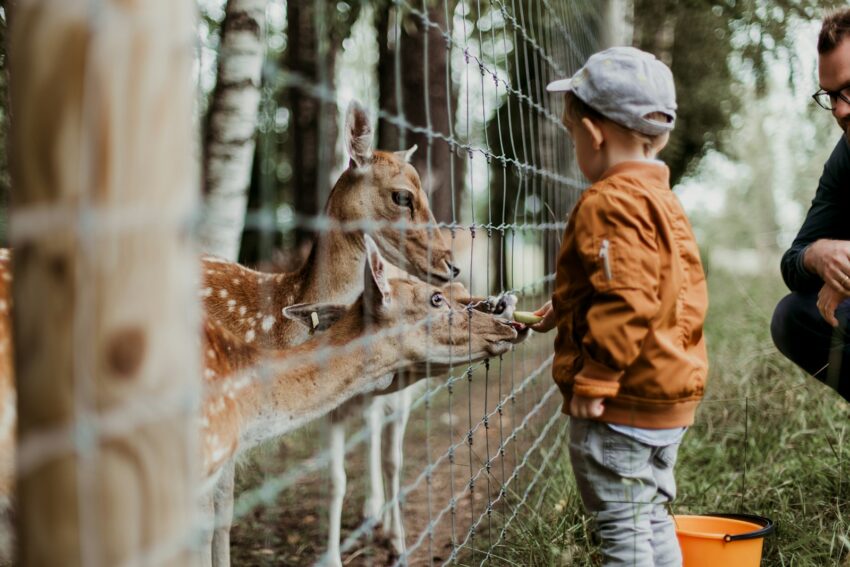Kids love animals, whether that is being around them, learning about them, or having fun with some of these animal activities. These are easy for parents and fun for kids.

This post contains affiliate links, see my disclosure policy for more information.
Animal Activities for Kids
You can combine one, or more of these fun activities with your homeschool lessons to add some hands-on learning, as a way to keep hands busy as they listen to a read-aloud, or when older siblings are working on their own work.
Animal Activities for Kids
These are fun activities to include with any animal-related lesson plans you are covering in your homeschool or school.
Shark Buoyancy - Animal Science Experiment
Let's learn more about how sharks float.
Arctic Animals - Science Experiment
Want to see if a layer of blubber can really help you stay warm in icy water? Try this experiment to see how arctic animals live in the cold.
Painted Rocks Sharks
Have some toothy fun with these shark-painted rocks. Follow this simple step-by-step tutorial on how to paint rocks.
Adorable Felt Animal DIY Pencil Toppers
Helping to make schoolwork a bit more fun, these cute felt animal DIY pencil toppers are a great back-to-school accessory!
How to Make Farm Animals for Kids Painted Rocks
These fun and easy-to-make farm animals for kids painted rocks and activities is a creative way to keep your little one happy and busy. Farm animals for kids painted rock crafts can be the perfect indoor activity whether it's at home or school.
Woodland Animal Craft
This animal papercraft is such a fun option! It's great for preschoolers to do with help or as an after-school activity that can be doubled up as some fun artwork to put on the walls.
- Mum's Creative Cupboard
Fun crocodile swamp activity for little ones!
Shape Turkey Craft (template included)
Help preschoolers learn shapes with this adorable shape turkey craft! As well as being a perfect Thanksgiving craft for toddlers and preschoolers this turkey craft would be fun to make as part of a farm theme or animal project.
Paper Plate Fish Craft for Kids: Make This Tropical Clown Fish!
This paper plate fish craft is a really cute one to make with kids!
Farm Activities For Preschoolers with Free Farm Printable Pack
Farm animal activities for toddlers and preschoolers at home - fine motor skills, sensory play and counting too!
Footprint Penguin: penguin chick footprint art, an easy winter craft
Winter is the perfect season to create Footprint Penguin art with acrylic paint, canvas, and a cozy sock-covered foot from a child you love.
Fun Animal Bingo Games for Kids (FREE Printable)
Get ready to explore the forest or the jungle with a bingo game… I have 3 different printable bingo games for kids who love to play games!
Old MacDonald Farm Animal Story Stones
Make farm animal story stones to accompany the popular nursery rhyme 'Old MacDonald Had a Farm'.
Shadow Science Physics Activity with Animal Silhouette Puppets (FREE Printable!)
Kids love their shadows, love to chase shadows, and love to make shadows do silly things! There are also some fun things to learn about shadows for science and STEM!
Jungle Animals Activities and Adventures
Check out these fun jungle animal activities for preschoolers! Jungles can be so much fun!
LEGO Animal Challenges For Kids
These LEGO® animal challenge cards are a great way to get kids fired up over STEM. Follow the prompts to complete the build using the LEGO® you already have.
Geometric Animal Art
A fun geometric animal art project for kids.
Cardboard Woolly Sheep Craft
Recreate the farm with this fun wolly sheep craft. Made from a recycled box and decorated with food coloring this is a great low-cost craft that kids are sure to love.
Farm Sensory Bin For Toddlers - AppleGreen Cottage
Farm sensory bin for toddlers. To the delight of our kid, spring is the time when tractors appear as if from nowhere and fill the landscape, plowing the fields all around us.
Cardboard Tube Fish Art
This cardboard tube fish art is fun for kids of all ages. Decorate with paints or fill with nature or craft resources. There is a free printable available making this a simple to set up and affordable craft project.
Paper Bag Zebra Craft Preschool Kids Will Love
Paper Bag Zebra Craft Preschool Kids Will Love Today I am sharing a fantastic paper bag zebra craft preschool kids will love to make.
Feed the Cat Early Learning Game with Free Printable
Feed the cat with this early learning activity. Change it up to include counting or fine motor skills.
Animal Science Curriculum for Homeschool
Mini Unit Study on Arctic Animal
Why Animal Activities Are Great for Homeschooling Kids
Incorporating animal-based activities into your homeschool routine is more than just fun—it’s an enriching way to enhance learning across multiple subjects. Whether you’re visiting a local farm, observing birds in the backyard, or studying the life cycle of frogs, animal activities offer hands-on education that supports your child’s academic and emotional development.
If you’re homeschooling, here are several reasons why animal-focused lessons are a smart and engaging addition to your daily curriculum.
Encourages Natural Curiosity and Inquiry-Based Learning
Children are naturally fascinated by animals, and that interest fuels curiosity-driven learning. Whether it’s observing a pet, watching wildlife, or reading about exotic species, kids become more eager to ask questions, conduct research, and make connections across subjects like science, reading, and geography.
Supports STEM and Life Science Education
Studying animals introduces foundational STEM concepts such as biology, anatomy, ecology, and environmental science. Tracking animal behavior, exploring food chains, and understanding habitats provide hands-on learning opportunities that align with educational standards for life science.
Boosts Empathy and Emotional Intelligence
Caring for animals, whether through real-life pet care or simulated activities, helps children develop empathy and responsibility. Learning to observe and respond to an animal’s needs encourages compassion, patience, and awareness—critical skills for social and emotional learning.
Enhances Observation and Critical Thinking Skills
Animal activities often require children to pay close attention to details. Whether drawing what they see, recording behavioral changes, or noticing physical characteristics, these exercises build observation, comparison, and classification skills, all of which are essential for critical thinking.
Improves Literacy and Language Development
Animal themes are excellent for reading comprehension, storytelling, and vocabulary expansion. From reading animal-themed books to writing reports or creating fictional pet diaries, these activities spark creative and academic writing in meaningful ways.

Encourages Outdoor Exploration and Physical Activity
Homeschooling can sometimes lean heavily on indoor work, but animal-related projects provide a reason to go outside. Activities like birdwatching, nature walks, and bug collecting get kids moving while connecting them to the natural world, which also helps reduce screen time and boost mental well-being.
Connects Learning Across Subjects
Animal topics are incredibly versatile and can be used to teach math (measuring animal weights, calculating food quantities), geography (animal habitats), art (drawing and painting animals), and history (animals in different cultures). This cross-curricular potential makes lesson planning both easy and engaging.
Inspires Long-Term Interests and Careers
For many children, early exposure to animal science can lead to a lifelong interest in veterinary medicine, biology, environmental science, or wildlife conservation. Even simple activities like caring for a class pet or raising butterflies can plant the seeds for future passion and purpose.
Strengthens Family Bonds Through Shared Activities
Whether it’s feeding chickens in the backyard or working together on a homemade bird feeder, animal activities offer shared experiences that foster connection, teamwork, and family bonding—all while reinforcing learning.
Helps Children with Special Learning Needs
Many homeschooling families work with children who have ADHD, anxiety, or sensory sensitivities. Animal interactions, even through books or videos, can have calming effects and improve focus and engagement for neurodivergent learners.
Final Thoughts on Using Animal Activities in Your Homeschool
Animal-based learning brings energy, excitement, and meaningful engagement to your homeschool curriculum. By appealing to a child’s natural love of animals, you can create rich, multi-disciplinary lessons that spark curiosity and support long-term academic success.
Looking for animal activity ideas for different grade levels? Check out our homeschool animal science printables, nature journal templates, and pet care checklists for hands-on inspiration.



